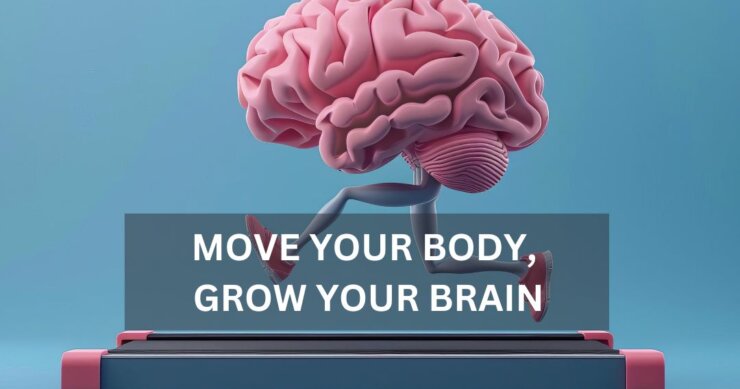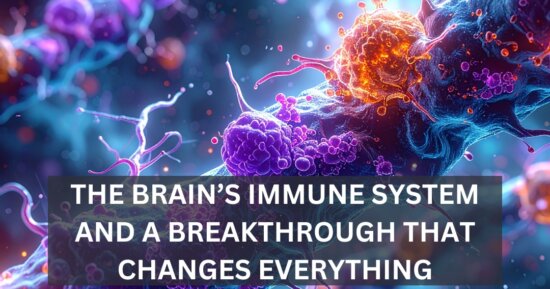Move Your Body, Grow Your Brain

I have been an advocate for physical exercise as a brain therapeutic for many years. It’s one of the most powerful tools we have not only for our bodies but for our brains as well. And now, a new study of over 10,000 individuals adds even more weight to that message. Researchers looked at brain scans and physical activity levels and found something remarkable: people who engaged in moderate to vigorous physical activity just a few days a week had significantly larger brain volumes in key regions tied to memory, cognition, and resilience against Alzheimer’s disease.
Let’s break that down. We know that as we age, brain volume tends to shrink. That shrinkage is closely tied to cognitive decline, and it’s especially pronounced in neurodegenerative diseases like Alzheimer’s. But what if we could slow or even prevent some of that loss through something as accessible as movement? This study showed that people who were physically active, meaning they engaged in activities that got their heart rate up, like brisk walking, cycling, or swimming, had greater gray matter, white matter, and hippocampal volumes. These aren’t abstract brain regions; they’re essential for memory, focus, emotional regulation, and learning.
What’s even more encouraging is that the bar wasn’t set unreasonably high. Participants in the “active” group weren’t ultra-marathoners. They simply met a modest threshold: about 2.5 days per week of moderate to vigorous activity. This is lower than the standard public health guidelines of 150 minutes per week, yet still yielded measurable brain benefits. In fact, those who met even this lower threshold had greater brain volume in areas that are especially vulnerable in Alzheimer’s disease.
If you’ve been sedentary or discouraged by how much movement the guidelines suggest, take this as an invitation. You don’t have to be perfect. You just need to start. Go for a brisk walk a few times a week. Park farther from the store. Dance in your living room. Take the stairs. These small choices add up in ways your brain will appreciate.
Another fascinating detail from the study was the difference in benefit between moderate and vigorous exercise. While both were helpful, moderate-intensity activity, like brisk walking, gardening, or a casual bike ride, showed a particularly strong relationship with larger brain volumes. That’s great news, especially for those who may not be in a place to engage in high-intensity workouts. Gentle consistency may matter more than pushing yourself to the extreme.
So how exactly does physical activity grow the brain? There are a few well-supported mechanisms. Exercise boosts levels of brain-derived neurotrophic factor (BDNF), a compound that supports the growth of new brain cells and connections. It also improves blood flow to the brain, enhances insulin sensitivity, reduces neuroinflammation, and may even reduce the accumulation of harmful proteins like amyloid and tau that are associated with Alzheimer’s. Put simply, when you move your body, you’re not just burning calories, you’re nourishing your brain.
And there’s more. The benefits of physical activity aren’t limited to preventing cognitive decline. Many people report improved mood, reduced anxiety, better sleep, and enhanced focus with regular movement. These are things we all want and need -at any age. And unlike a pill or supplement, movement has no side effects and doesn’t require a prescription. It’s available to you right now.
Of course, consistency is key. The greatest gains come not from one great workout but from building a rhythm that works in your life. Maybe it’s a morning walk, a weekend hike, or an after-dinner bike ride with your family. The form doesn’t matter nearly as much as the frequency. Make movement part of who you are, not just something you do.
The truth is, brain health is not something we can take for granted. But it is something we can build. We build it every time we choose to move our bodies. The results may not be visible in the mirror, but they’re happening deep within your brain: supporting memory, protecting against degeneration, and keeping you mentally sharp well into your later years.
So, here’s your takeaway:
Physical activity is not just good for your heart or your waistline, it’s a brain intervention.
You don’t have to wait for a diagnosis or a crisis to act. Start now. You don’t need a gym or a trainer or fancy equipment. You just need a commitment to move regularly and a belief that your brain is worth the effort. Because it is. And the science tells us, loud and clear, that your future brain will thank you.













